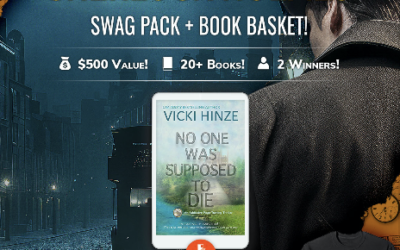Vicki Hinze © 2001-2011
(Blog Post)
Last weekend at a writer’s conference, I was asked about the books that didn’t sell, and I realized that I haven’t discussed those much. So I thought I’d address my views on that for the writers among us, and for curious readers.
First, I know no writers who don’t have projects that didn’t get published. Or any writers who after they’re published don’t continue to add new projects to their unpublished list. Why does that happen?
Well, you might hit the market at the wrong time with a proposed project. For example, a story of someone hijacking a plane and flying it into a building right around 9/11. Or you might hit on a topic that makes people squeamish–like poisoning of food supplies on the borders when that’s just come into focus on the nation’s radar. You might hit a sore subject, or one that a major writer has just contracted to write for the same publisher.
The reasons are as varied as writers, and often they have nothing to do with the quality of the work but everything to do with marketing.
So when this happens, what does the writer do with the work?
The truth is that it depends–and it’d be easier to tell you what the writer doesn’t do with it. S/he doesn’t toss it and forget it. If the story and characters are so compelling as a unit that the writer can’t bear to separate them, then odds are high s/he will shelve the project until such time as the market is more receptive. But what I’ve most noted is that characters have far more than one story in them. Just as we, in our lives, have more than one compelling event we can share with one another. And so an idea for a new novel comes along, or the germ of one, and before the writer knows what hit her, a former character jumps in and claims his or her space in it.
So the writer weighs that character in this story and often finds that character is the perfect character for it. So the material and character’s internal and external conflicts that were used in the old story become the spine of the new story. And before you know it, you’ve got a different book with solid characters, solid conflicts and a new project.
I’ve pulled characters from several different proposals and created a new project with them, sold the new project, and then brought in elements from the old project in a subsequent, related book. Times change, the market changes, and what didn’t find a comfortable market home earlier can later.
Early on, I wrote a lot of complete manuscripts that weren’t published. I had a penchant for mixing genres–four or five of them–and that made them difficult to sell because they didn’t fit neatly into any defined genre. Where would they go on the bookshelf in the bookstore? That was a marketing challenge, but it sure made for fun writing!
Now, in many cases, those marketing lines have softened. There are defined sub-genres where many of these works do fit. There are established reader bases for these types of books. It’s a whole different world, and these projects now have a place in it.
The writing has changed a good deal since those days, as it does for any writer who writes over a period of time. But those things are the mechanics, the craft, and they can be honed.
I’ve often been told that early works are most original. I believe that’s true, because the writer is writer for the sheer love of it, unencumbered by anything else. That’s a privilege, though many writers don’t realize it until they start feeling the weight of those encumbrances. Yet writers can recapture that early enthusiasm in borrowing from or reworking those early stories–those lost treasures.
And the writer can also maintain a trust with him or herself. One where s/he vows to never write a book s/he doesn’t love. That, too, is a treasure–and it’s one the writer should never allow to be lost.




